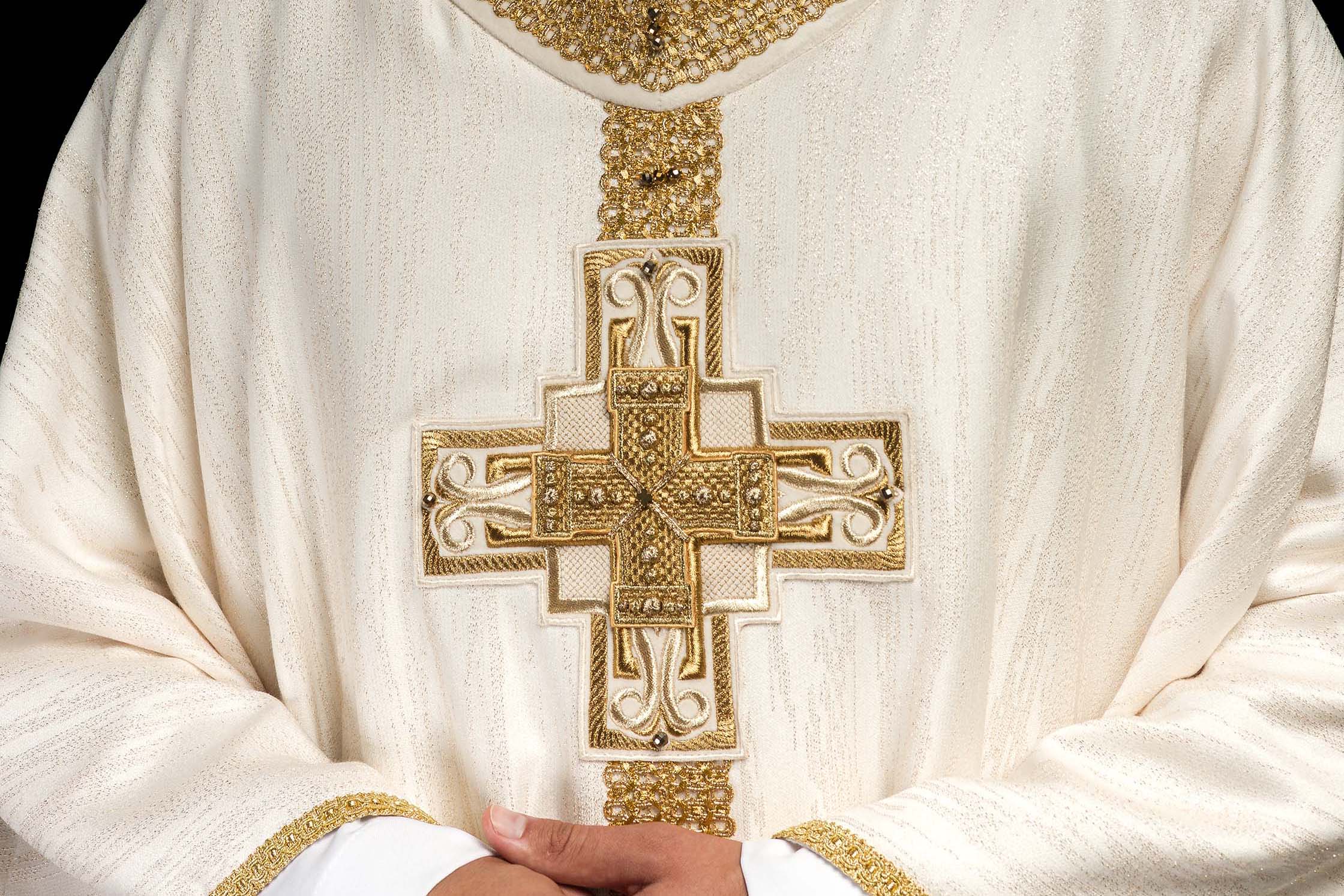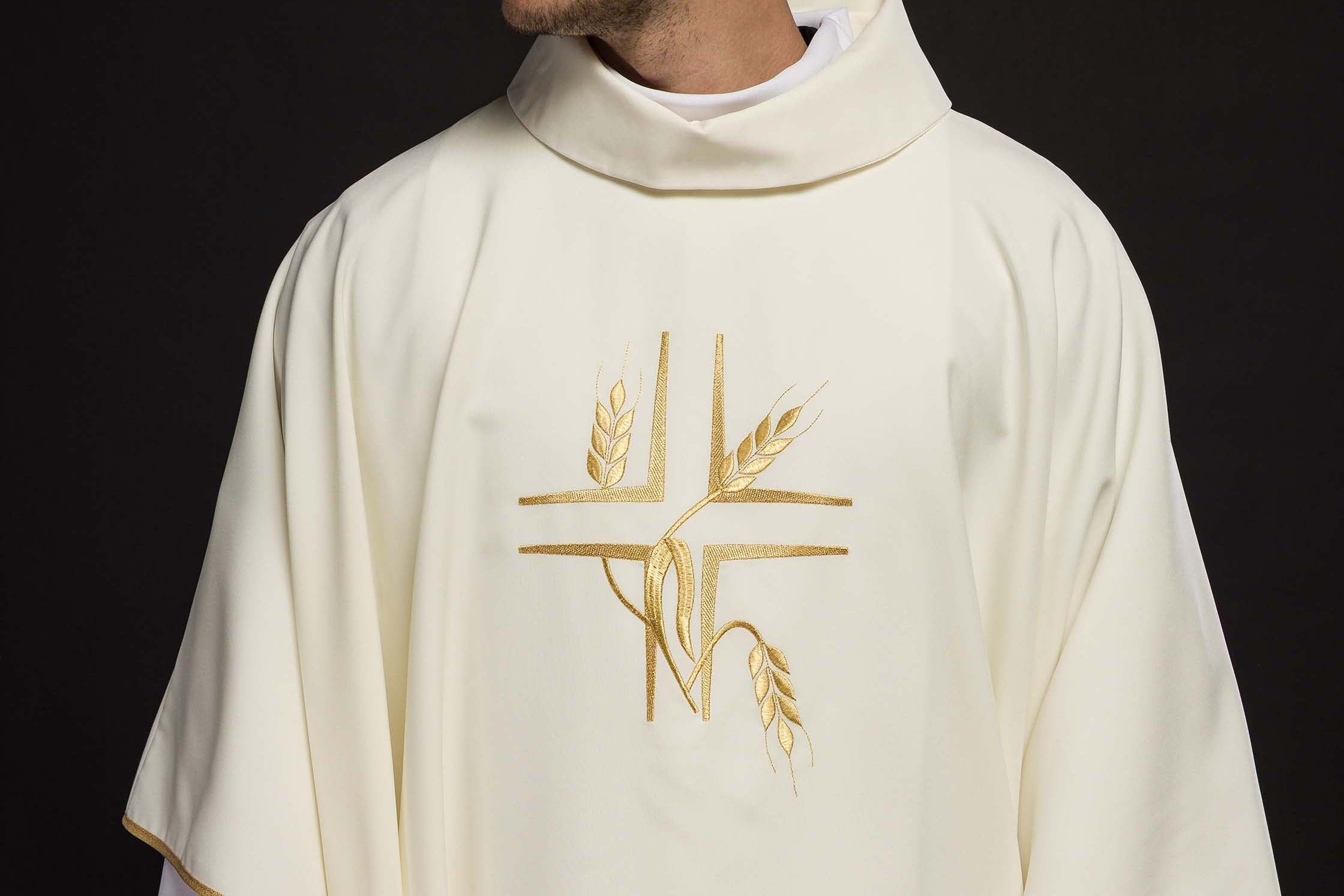
How to Care for Liturgical Vestments: Storage and Cleaning
How to Care for Liturgical Vestments? Storage and Washing
Liturgical vestments are not just clothing, but also symbols of faith, rich tradition, and artistic craftsmanship. Made from delicate fabrics, often adorned with intricate embroidery, they require special care to serve for many years, impeccably presenting themselves during church ceremonies. Proper storage and regular, yet gentle care, are crucial to preserving their original luster and integrity. This article is a comprehensive guide on how to provide our precious liturgical robes with the care they deserve.
Why is Proper Care of Vestments So Important?
Liturgical vestments are used during the most important church rites. They can be exposed to moisture, dust, sweat, and minor soiling. Delicate fabrics, such as silk, velvet, or specialized liturgical fabrics, as well as intricate embroideries made with metallic threads or adorned with stones, are susceptible to mechanical damage, fading, or stretching. Neglecting care can lead to irreversible destruction, loss of color, weakening of the material structure, or damage to the embroidery. Proper care of vestments is an expression of respect for their sacred character and the heritage they represent.
Proper Storage – The Secret to Vestment Longevity
The method of storage is fundamental to the condition of liturgical robes. It is crucial to provide protection against external factors that can negatively affect the material and embellishments.
Choosing the Right Storage Location
Vestments should be stored in a dry, airy, and dark place. Avoid damp basements, dusty attics, or places directly exposed to sunlight, which can cause colors to fade and fibers to weaken. An ideal place is a closet or wardrobe where the temperature is stable and the humidity is moderate.
Protecting Against Dust and Moisture
To further protect vestments from dust, moisture, and potential damage, it is recommended to store them in special garment bags. The best are covers made of natural, breathable materials such as cotton or linen. Avoid plastic bags that do not allow air to circulate and can contribute to moisture condensation. The covers should be spacious enough for the vestment to lie freely without being too compressed or folded.
How to Hang or Fold Vestments?
The decision to hang or fold a vestment depends on its material and construction, as well as the available space.
Hanging
If the vestment is made of a fabric prone to wrinkling or has heavy embroidery, hanging may be a better solution. Use wide, soft hangers, preferably with rounded arms, that prevent deformation of the vestment's shoulders. The hanger should be covered with material or velour to prevent the fabric from slipping. It is also worth securing the vestment with an additional strip of material draped over the hanger arm to relieve the seams and protect the fabric.
Folding
Lighter vestments, made of fabrics less prone to wrinkling, can be safely folded. Fold them gently, avoiding sharp edges and strong creases that can permanently damage the embroidery or fabric. Use folding techniques that minimize pressure on the embellishments. You can place tissue paper or thin fabric between the layers to prevent chafing of the embroidery.
Securing Embroideries and Decorations
If the vestment is decorated with stones, beads, or other decorative elements, special attention should be paid to securing them during storage. Make sure that the decorations do not rub against each other or other stored items. Delicate packaging of individual elements may be necessary.
Washing Liturgical Vestments – Delicacy Above All
Washing vestments is the riskiest stage of their care. Always act with the utmost caution, keeping in mind the delicacy of the materials and embellishments.
When and How Often to Wash a Vestment?
Liturgical vestments are not washed often. Regular airing and gentle dusting are usually sufficient. Washing is necessary only in case of visible soiling. It is always worth checking the manufacturer's label – if available, there may be detailed care recommendations.
Washing Methods – Choosing the Best Solution
By far the safest method of caring for most vestments is hand washing in cool water. Alternatively, in some cases, machine washing is possible, but it requires special precautions.
Hand Washing
This is the recommended method for most vestments, especially those made of delicate fabrics, adorned with embroidery, stones, or metallic threads.
- Choosing a detergent: Use very mild detergents designed for washing delicate fabrics or silk. Avoid bleaches, enzyme-containing agents, and harsh chemicals. Neutral soap or special silk shampoo will work best.
- Water temperature: The water should be cool, preferably at a temperature not exceeding 30°C.
- Washing process: Fill a large bowl with cool water, add a small amount of detergent, and gently stir to dissolve. Immerse the vestment in the water and gently knead, trying not to rub or twist the material. Focus on the areas where there is soiling, treating them gently.
- Rinsing: After washing, rinse the vestment thoroughly in clean, cool water until the water is clear and free of foam. Change the water several times.
- Removing excess water: Gently squeeze out excess water without twisting the fabric. You can wrap the vestment in a clean, dry towel and gently press to absorb moisture.
Machine Washing – Only as a Last Resort and with Caution
If the manufacturer allows machine washing, their recommendations must be strictly followed. Set the program for delicate fabrics or wool, with a minimum number of revolutions or completely without spinning. Use only cold water and a minimal amount of mild detergent. Place the vestment in a special laundry bag or pillowcase to further protect it from mechanical friction against the washing machine drum.
Drying Vestments – How to Avoid Damage?
Drying is just as important as washing itself. Never dry a vestment in a tumble dryer, in direct sunlight, or on a radiator. Exposure to high temperatures can cause the material to shrink, damage embroideries, and cause color loss.
Drying Methods
- Flat drying: This is the safest method. Spread the vestment on a flat surface, on a clean, dry towel or a special drying net. If possible, hang it on a standing dryer, on wide arms, to ensure good air circulation.
- Shaping: Gently shape the vestment to its original form, smoothing out any creases.
- Patience: Allow the vestment to dry completely naturally. This may take several hours, depending on the thickness of the fabric and the surrounding conditions.
Ironing and Removing Creases
Vestments usually do not require ironing if they have been stored and dried properly. However, if creases appear, they should be removed with the utmost caution.
Ironing Rules
- Temperature: Set the iron to the lowest possible temperature suitable for the most delicate material the vestment is made of (e.g., silk). Avoid the steam function unless the manufacturer explicitly allows it.
- Ironing through material: Always iron the vestment through a cotton cloth or thin towel to protect the fabric and embroidery from direct contact with the heated iron soleplate.
- Ironing on the reverse side: Iron the vestment from the reverse side, avoiding areas with embroidery.
- No pressure: Do not press the iron firmly on the fabric. Gentle movement over the surface should be sufficient.
- Avoiding creases: If in doubt, it is better to refrain from ironing or use the services of a professional laundry specializing in liturgical fabrics.
Specific Tips for Different Materials and Embellishments
Different materials and embellishment techniques require an individual approach to care.
- Silk: Very delicate, requires hand washing in cool water with special silk detergents. Drying flat, without twisting. Ironing at the lowest temperature through a cloth.
- Velvet: Fabric prone to creases and impressions. It usually cannot be soaked or strongly twisted. Dry cleaning or gentle spot cleaning is recommended. If refreshment is necessary, special velvet cleaning agents can be used. Storage on wide hangers to avoid impressing the fibers.
- Fabrics with metal embroidery: Metal threads (gold, silver) are susceptible to abrasion and tarnishing. Avoid strong rubbing, ironing directly on the embroidery.
- Vestments with stones/beads: Require special care during washing and storage to avoid damaging or losing the decorations.
When to Seek Professional Help?
In the case of very valuable, antique, or heavily soiled vestments, the best solution may be to give them to a professional laundry specializing in liturgical fabrics or antique clothing. Specialists have the appropriate knowledge, experience, and chemicals to safely restore the robes to their former glory, minimizing the risk of damage.
Summary
Caring for liturgical vestments is a process that requires patience, attention, and knowledge. Proper storage in a dry, airy, and dark place, protection in breathable garment bags, and gentle hand washing methods, combined with careful drying and possible ironing, allow you to preserve the beauty and value of these unique robes for many years. Let us remember that each vestment is not only a liturgical element but also a work of art and a carrier of spiritual heritage. If you are looking for unique vestments made of the highest quality materials and adorned with beautiful, careful embroidery, we invite you to explore our wide range of products at haftinausa.com. There you will find robes perfectly suited to every occasion and need.
```




